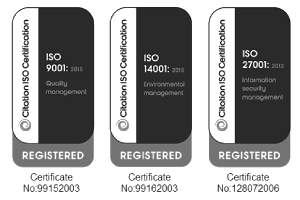Insourcing: A guide to bringing local authority services back in house
The word ‘outsourcing’ is common parlance in both the public and private sectors, but the practice of ‘insourcing’ has received relatively little attention.
APSE embarked upon its examination of the trend towards insourcing – or returning to delivery of services by in-house providers – before the effects of the global economic downturn were fully evident. The crisis we are now experiencing makes the need to rethink largely unchallenged assumptions about the effectiveness of outsourcing more pressing – and our examination of the insourcing phenomena more pertinent than ever. Instability in world markets will mean private companies who have been delivering local authority services may be more vulnerable to mergers and acquisitions and will find it increasingly difficult to secure investment; recent reports suggest that this is placing partnerships with the public sector under threat.
In such uncertain times, public sector procurers require flexibility, rather than being locked into long-term contractual arrangements that are costly to change. Councils need to be confident that whoever delivers services to communities is fully accountable and financially robust. And they need to be able to retain control over services, offer local training and employment opportunities and prevent public funds leaking out of local areas in the form of profits to shareholders. It is our belief that in-house services can best meet all these needs. While it has become accepted wisdom that when services are outsourced they will inevitably continue to be provided externally, there is mounting evidence that councils have been bringing services back in-house and are continuing to do so.
The Department for Business Enterprise and Regulatory Reform (BERR) Public Services Industry Review, published in July 2008, said there were “clear benefits” to taxpayers in opening up public services to competition, and recommends more outsourcing of public services to private and voluntary organisations. However, APSE’s research would suggest that this is far from the case. Here we set out equally compelling reasons both for retaining services in-house and, where there is a good strategic and operational case, for bringing services back in-house from the private and third sectors.
We are not suggesting that in-house services are, or should, be the only method of service delivery available to local authorities. We do however, wish to set the record straight and provide an appraisal of the benefits of in-house provision to counterbalance vested interests seeking only to promote a one size fits all solution. In this we have some useful allies, not least researchers from the United States and Deloittes, whose 2005 report Calling a Change in the Outsourcing Market found limitations to the outsourcing drive in public services and evidence of public and private sector bodies bringing work back in-house.
The Department for Communities and Local Government’s latest Statutory Guidance on Creating Strong, Safe and Prosperous Communities says councils should “regularly and rigorously assess and review the competitiveness” of services against “similar services provided by other statutory bodies, local authorities and other service providers”. Many councils already adopt this approach, and where externally provided services are found wanting, local authorities have considered the in-house option as a means of achieving their wider community leadership responsibilities.
Significantly, APSE’s research shows insourcing is happening for practical reasons as opposed to any ideological stance. Our investigation demonstrates that councils are finding insourcing a realistic service delivery option that can: ensure service continuity, address issues of poor performance; build flexibility and integration into the service delivery chain; and provide more accountable local services. I hope you will find the research informative and that it will provide a useful guide for those local authorities that are considering insourcing services.
A copy of the full report is available to download below:

.png)



.png)